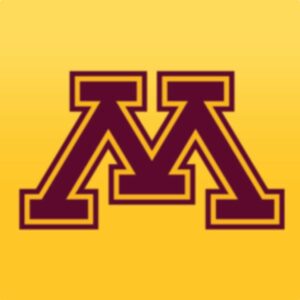
Robotics: Perception and Manipulation (RPM) Lab is a research group in the Computer Science and Engineering (CS&E) department at the Univ. of Minnesota and affiliated with the Minnesota Robotics Institute (https://cse.umn.edu/mnri). The lab focuses on the fundamental question of “What should/does/can a physical object in our environment mean to a robot?” To answer this question, they employ (1) Spot Robot from Boston Dynamics and (2) Dual-arm Manipulator with UR5e arms in their research.
Department: Computer Science and Engineering (CS&E), Minnesota Robotics Institute (MnRI)
Homepage: https://rpm-lab.github.io/
E-mail: kdesingh@umn.edu
We are a public sector organization and we DO NOT plan to involve industry partners
- Looking for: Researcher (multidisciplinary),Researcher (scientific/technical/engineering)
- Track: Challenges
- Key application domains: Environment,Flexible Assembly Lines,Health,Industry 4.0,Lifelong Learning,Personal Robotic Assistant,Robotics Manipulation
Preferred hosting duration: No preference
Maximum number of fellows to be hosted by the organization simultaneously : 2
Challenges :
- The lab focuses on addressing the fundamental question of — What should/does/can a physical object in our environment mean to a robot?– thus leading to the following research questions.
– How can a robot perceive and reason about objects in the human environment?
– How can a robot interact with these objects?
– How can a robot compose its interactive skills into performing meaningful tasks?
– How can a robot learn to do all of the above toward seamless interaction and task execution?The group is interested in application domains (healthcare, climate change, agriculture, etc.) where our research solutions can make a huge impact.To answer the above research questions, the lab is interested in a wide range of research topics, such as:
– Object Perception, Active Perception, Interactive Perception, Tactile Sensing, Multimodal Sensing, Sensor Fusion, 3D Vision, Neural Rendering, Implicit Modeling of Objects, Probabilistic Graphical Models, and Bayesian Inference.
– Grasp Detection, Grasp Planning, Manipulation Planning and Control, Dual-arm Manipulation, and Mobile-manipulation.
– Deep Learning, Self-supervised Learning, Object Representation Learning, Imitation Learning, and Learning from Demonstrations.Some combination of the following technical skills are required for this position:
– Proficiency in Linux,
– Proficiency in one of the programming languages (C++, Python),
– Experience with Pytorch or TensorFlow, CUDA programming
– Experience with ROS, Gazebo, Pybullet, other simulation environments
– Experience working on the real sensor(s) or robot(s).
– Experience with Blender or other designing tools.Applicants are encouraged to include a link to their personal website, project pages, GitHub code, and any multimedia supporting the projects in their CV. Candidates with relevant experience in the abovementioned areas and a healthy publication record are encouraged to apply. However, a strong preference will be given to candidates with publications (in the following or other similar venues: RSS, ICRA, CoRL, IROS, CVPR, ICCV, NeurIPS, ICLR, etc.) and-or experience in working with real robotic systems.
In addition to researching on some of the most compelling problems in robotics, computer vision, and machine learning, successful applicants can expect to
– Collaborate closely with other research groups affiliated with the [Minnesota Robotics Institute (MnRI)](https://cse.umn.edu/mnri).
– Gain experience in teaching advanced topics in robotics and AI.
– Gain experience in leading research projects with a team of students.
- The lab focuses on addressing the fundamental question of — What should/does/can a physical object in our environment mean to a robot?– thus leading to the following research questions.
